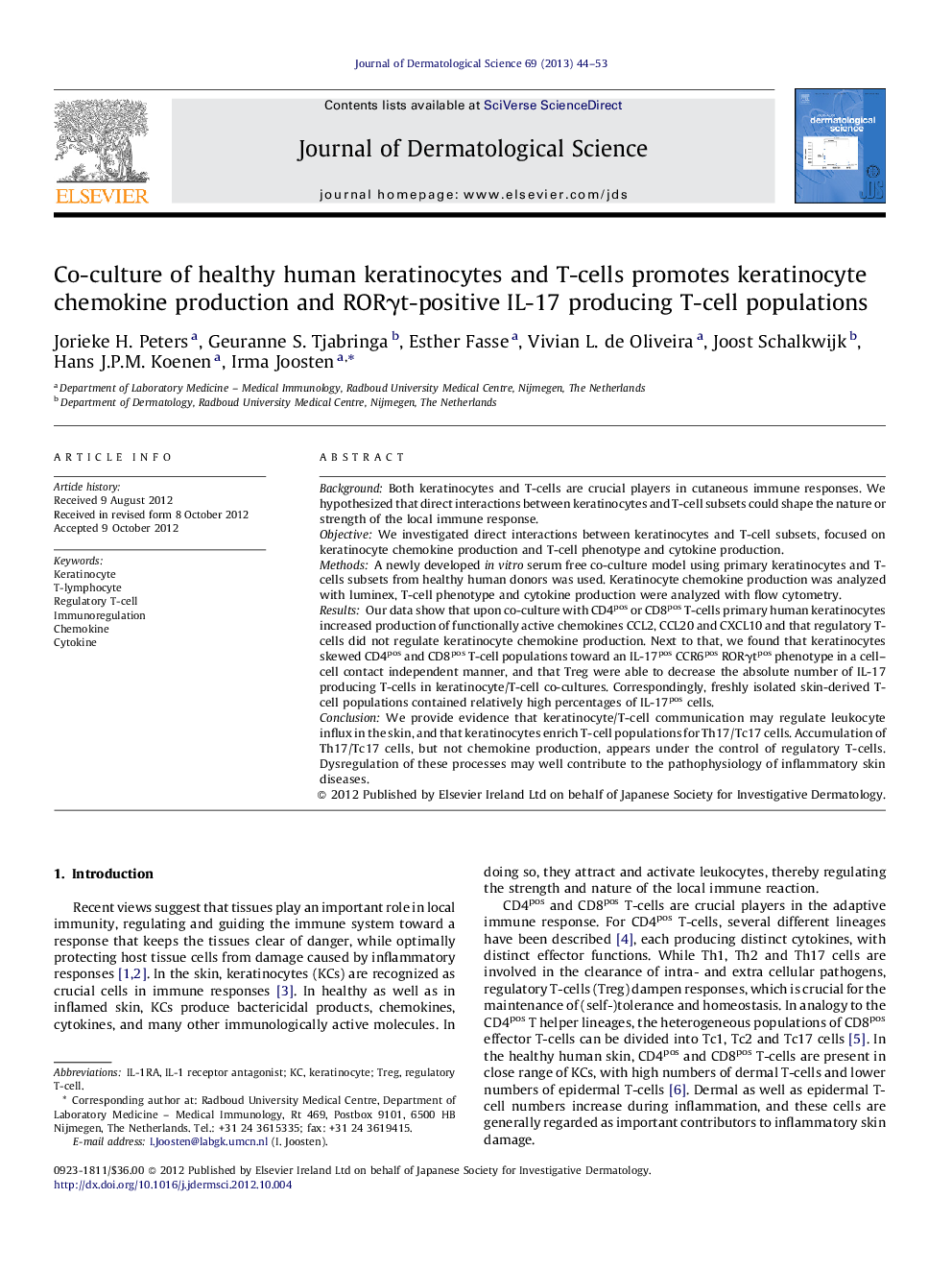| کد مقاله | کد نشریه | سال انتشار | مقاله انگلیسی | نسخه تمام متن |
|---|---|---|---|---|
| 3213155 | 1203221 | 2013 | 10 صفحه PDF | دانلود رایگان |

BackgroundBoth keratinocytes and T-cells are crucial players in cutaneous immune responses. We hypothesized that direct interactions between keratinocytes and T-cell subsets could shape the nature or strength of the local immune response.ObjectiveWe investigated direct interactions between keratinocytes and T-cell subsets, focused on keratinocyte chemokine production and T-cell phenotype and cytokine production.MethodsA newly developed in vitro serum free co-culture model using primary keratinocytes and T-cells subsets from healthy human donors was used. Keratinocyte chemokine production was analyzed with luminex, T-cell phenotype and cytokine production were analyzed with flow cytometry.ResultsOur data show that upon co-culture with CD4pos or CD8pos T-cells primary human keratinocytes increased production of functionally active chemokines CCL2, CCL20 and CXCL10 and that regulatory T-cells did not regulate keratinocyte chemokine production. Next to that, we found that keratinocytes skewed CD4pos and CD8pos T-cell populations toward an IL-17pos CCR6pos RORγtpos phenotype in a cell–cell contact independent manner, and that Treg were able to decrease the absolute number of IL-17 producing T-cells in keratinocyte/T-cell co-cultures. Correspondingly, freshly isolated skin-derived T-cell populations contained relatively high percentages of IL-17pos cells.ConclusionWe provide evidence that keratinocyte/T-cell communication may regulate leukocyte influx in the skin, and that keratinocytes enrich T-cell populations for Th17/Tc17 cells. Accumulation of Th17/Tc17 cells, but not chemokine production, appears under the control of regulatory T-cells. Dysregulation of these processes may well contribute to the pathophysiology of inflammatory skin diseases.
Journal: Journal of Dermatological Science - Volume 69, Issue 1, January 2013, Pages 44–53